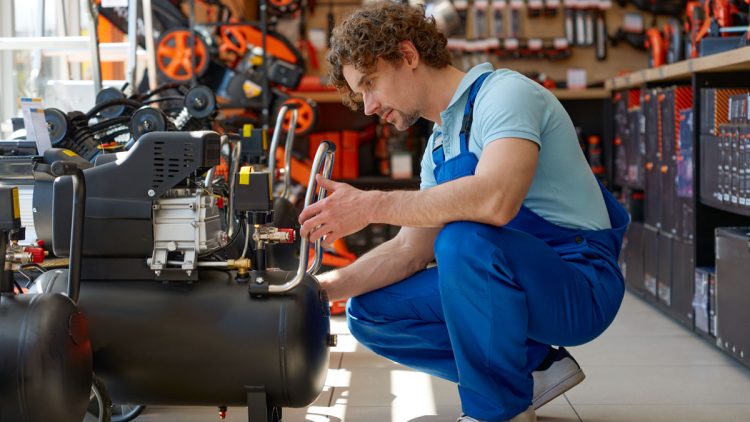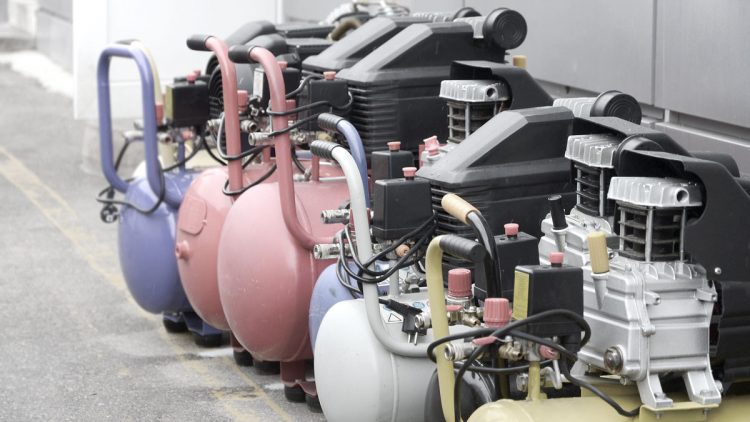How Does an Air Compressor Work?
People most likely use an air compressor for all kinds of jobs — from powering tools like nail guns and paint sprayers to filling up basketballs. However, are you accustomed to the basics of how an air compressor works? Knowing how an air compressor works can help you establish the right compressor for your jobs and the way to effectively maintain your compressor. Air compressors are somewhat simple machines that have 3 primary components:
- Drive, which can be a gasoline engine or electric motor, gives the power to propel the compressor pump.
- Pump, which utilizes the energy from the drive for drawing in atmospheric air and compresses it to heightened pressure. This compressed air is then transferred through a discharge tube into a storage tank for later use.
- Storage tank, which is fitted with a one-way valve known as a check valve that stops compressed air from pushing back pressure on the pump. The compressors air storage tank takes the role as an air-flow buffer, removing the requirement to run the compressor constantly, leading to less pump and motor damages from overheating.
The air inside the compressors tank is stored at a heightened pressure than the air inside the room and it wishes to return to its normal pressure. If the regulator gets opened, air leaves. This compressed air can be employed to carry out work like filling up soccer balls, spraying paint or for the operation of pneumatic devices.
The atmospheric air that gets drawn into the tank comprises water molecules, which do not remain suspended in the air when under heightened pressure at room temperatures. As a result, these water molecules compress in the storage tank. To address this moisture, each tank is equipped with a drain valve located underneath the tank. This enables users to drain trapped moisture, retain tank volume and hinder tank corrosion.
Causes to Turn the Compressor On and Off
Additionally, each air compressor comes with a pressure switch that automatically turns the unit on when the air pressure in the tank is under the rating cut-in pressure and stops the unit when the tank pressure attains the cut-out pressure. The tank’s pressure gauge takes measurements of the air pressure within the tank.
When the air compressor turns off, a discharge valve releases the pressurized air in the discharge tube. This enables the pump to turn on without having to power through the resistance the captured air would cause. In an improbable event, if the pressure switch fails to turn off the compressor, an integral safety valve is there for releasing the excessive pressure.
A safety valve and pressure switches on an air compressor are set from the factory to be safely operated and should not be altered.
Woodworking Supplies Mesa by Timber Woodworking
Timber Woodworking offers hardwoods in Mesa, Arizona. We specialize in woodworking tools, equipment, and supplies for commercial woodworking cabinet shops or furniture manufacturers as well as the home shop hobbyist. Contact us today, or call if you should have any questions.


